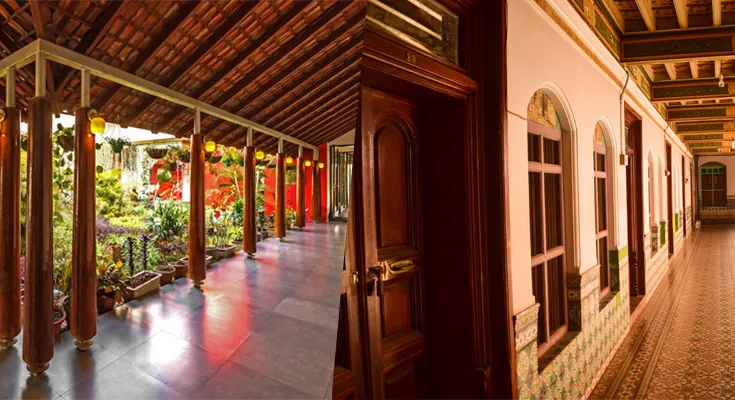In India, the façade of a house is more than just an exterior; it’s a reflection of cultural heritage, architectural prowess, and personal identity. Traditional house front designs in Indian style are characterized by their rich tapestry of intricate craftsmanship and cultural motifs, creating a visual narrative that celebrates history, tradition, and aesthetics. From ornate carvings to vibrant colors and symbolic elements, each detail serves a purpose beyond mere decoration, embodying the essence of Indian design philosophy.
Embracing Architectural Heritage
The architecture of traditional Indian homes varies greatly depending on the region, climate, and cultural influences. From the grand havelis of Rajasthan with their elaborate jharokhas (overhanging enclosed balcony) and intricately carved wooden doors to the traditional South Indian homes adorned with colorful kolam (rangoli) patterns and intricate woodwork, every style reflects local traditions and craftsmanship.
Intricate Craftsmanship: Woodwork and Stonework
One of the hallmarks of traditional Indian house fronts is the craftsmanship displayed in woodwork and stonework. Intricately carved wooden doors, often embellished with geometric patterns, floral motifs, or depictions of mythical creatures like elephants or peacocks, serve as a focal point. The use of teak, rosewood, or sandalwood ensures durability and lends a timeless appeal to these architectural elements.
Stonework, particularly in regions with abundant stone resources like Rajasthan or Gujarat, manifests in elaborate jali work (lattice screens), carved pillars, and decorative arches. These elements not only enhance the aesthetic appeal but also provide natural ventilation and shade, making them practical solutions suited to India’s climate.
Vibrant Colors and Decorative Details
Color plays a significant role in traditional Indian house front design. Vibrant hues such as red, ochre, indigo, and saffron are often used to paint walls or highlight architectural features. These colors are not merely decorative but hold symbolic meanings rooted in Indian culture and spirituality.
Decorative details such as ceramic tiles, terracotta plaques, or brass embellishments further enrich the façade. These details may depict auspicious symbols like the lotus flower or the swastika, religious motifs like gods and goddesses, or scenes from epics like the Ramayana or Mahabharata, adding layers of meaning and cultural significance to the design.
Harmony with Surroundings and Community
Traditional Indian house fronts are designed not in isolation but in harmony with their surroundings and the community. They often feature open verandas or courtyards that serve as social spaces for gatherings and ceremonies. The layout ensures privacy while fostering a sense of community and shared heritage.
Adapting Tradition to Modern Times
While preserving traditional elements, modern Indian house front designs also incorporate contemporary materials and technologies for sustainability and convenience. Architects and designers blend age-old techniques with modern aesthetics to create homes that are functional, energy-efficient, and aesthetically pleasing.
Traditional house front design in Indian style is a testament to the country’s rich cultural diversity and architectural heritage. From the ornate carvings of Rajasthan to the colorful façades of South India, each style reflects local traditions, craftsmanship, and a deep-rooted connection to history and spirituality. By embracing intricate craftsmanship, cultural motifs, vibrant colors, and harmonious integration with surroundings, traditional Indian house fronts not only enhance the visual appeal of neighborhoods but also serve as symbols of cultural identity and community pride.



